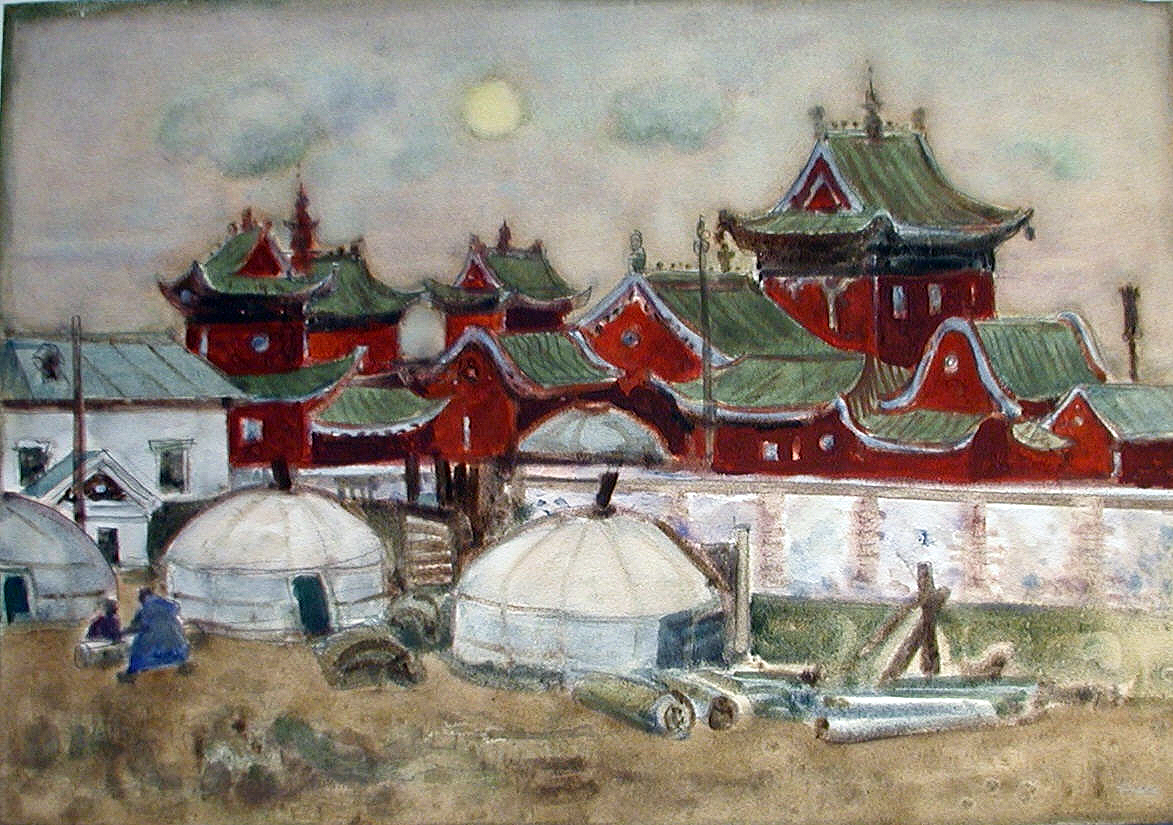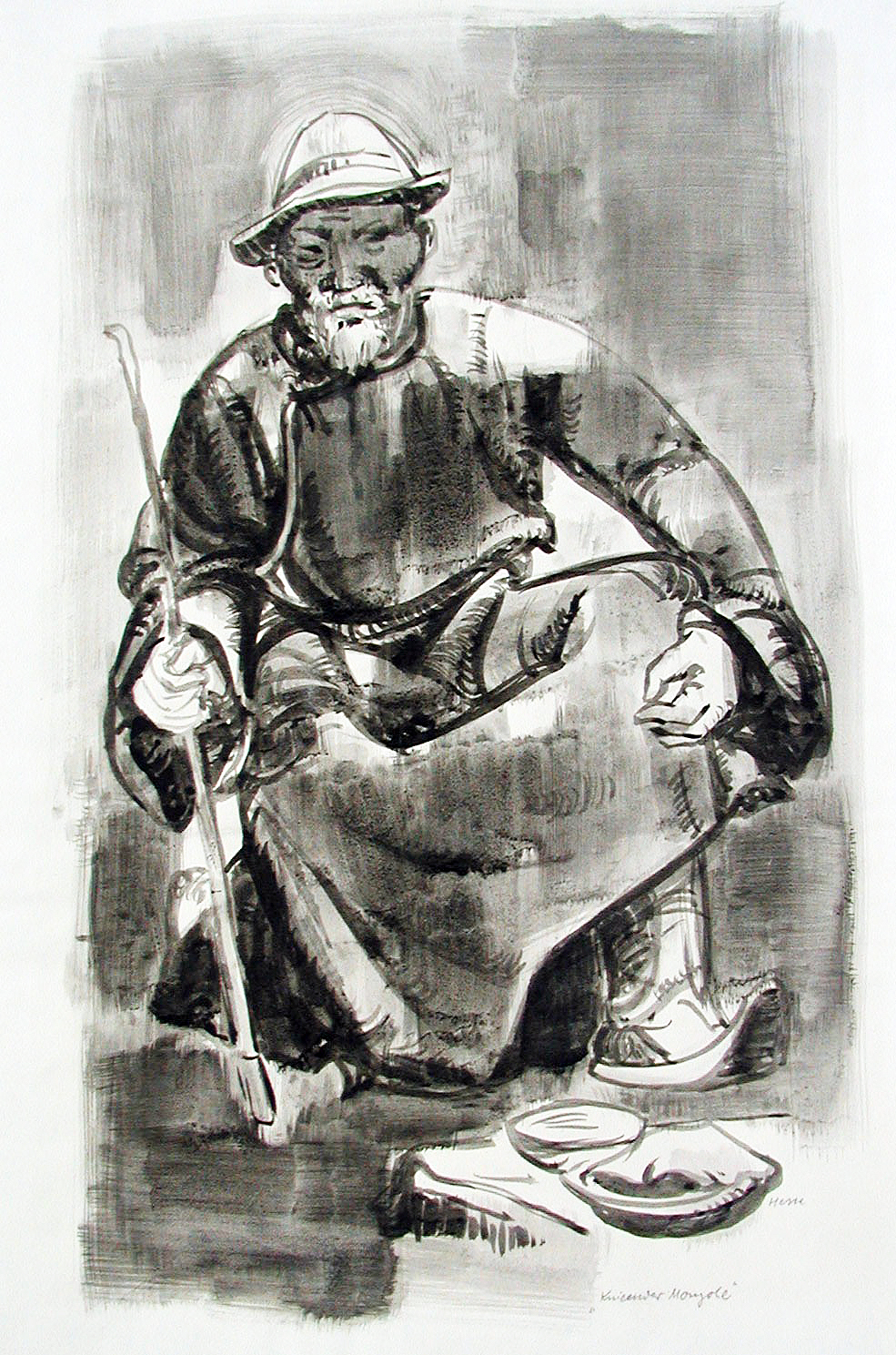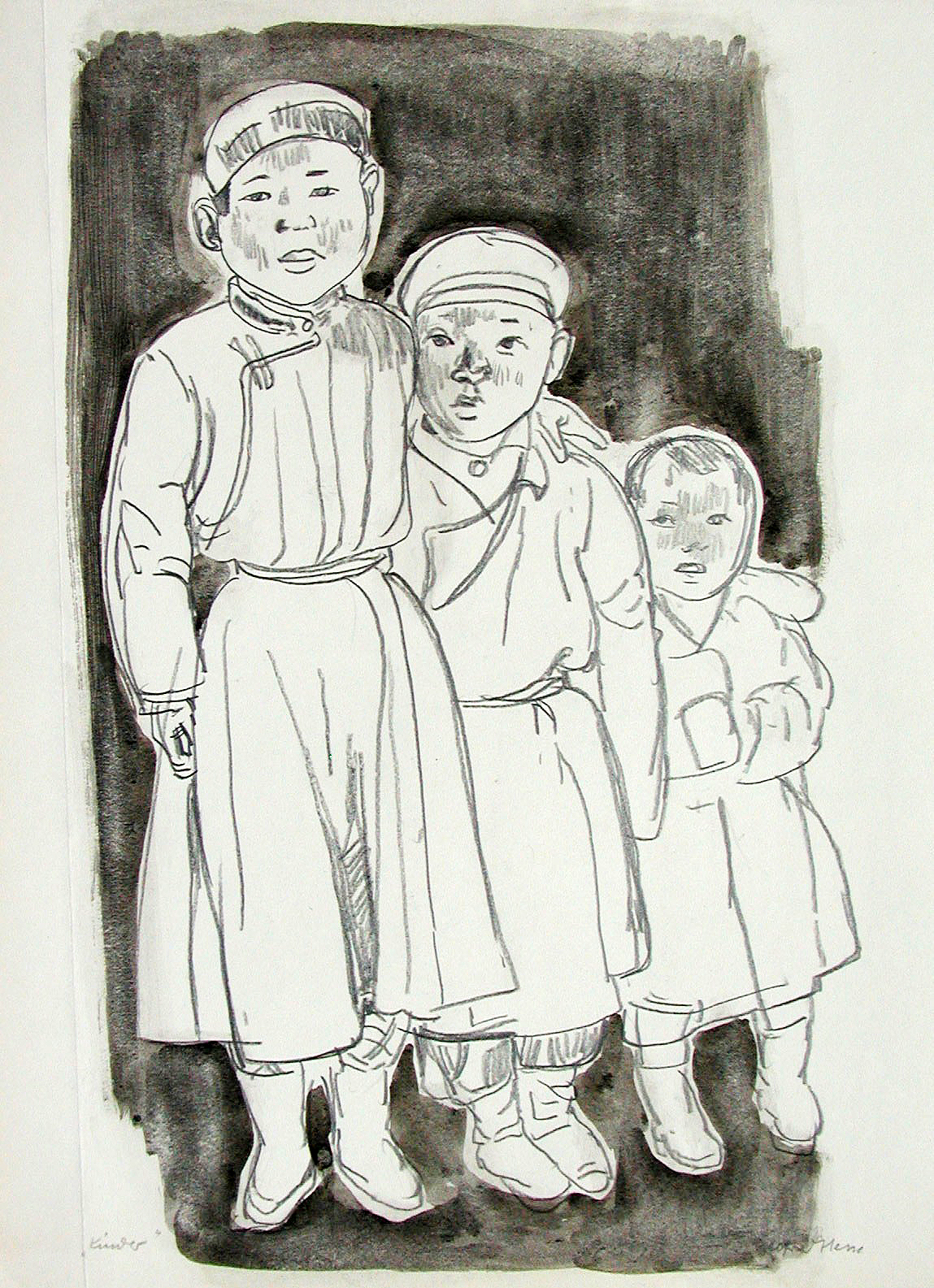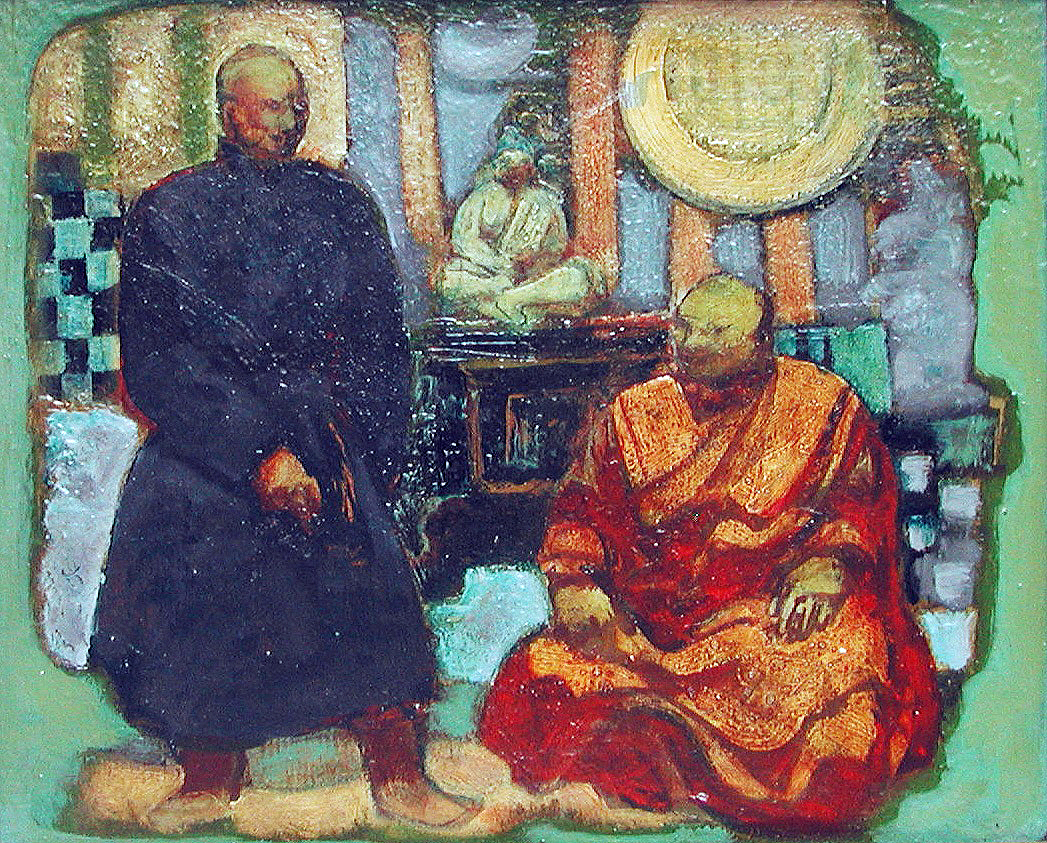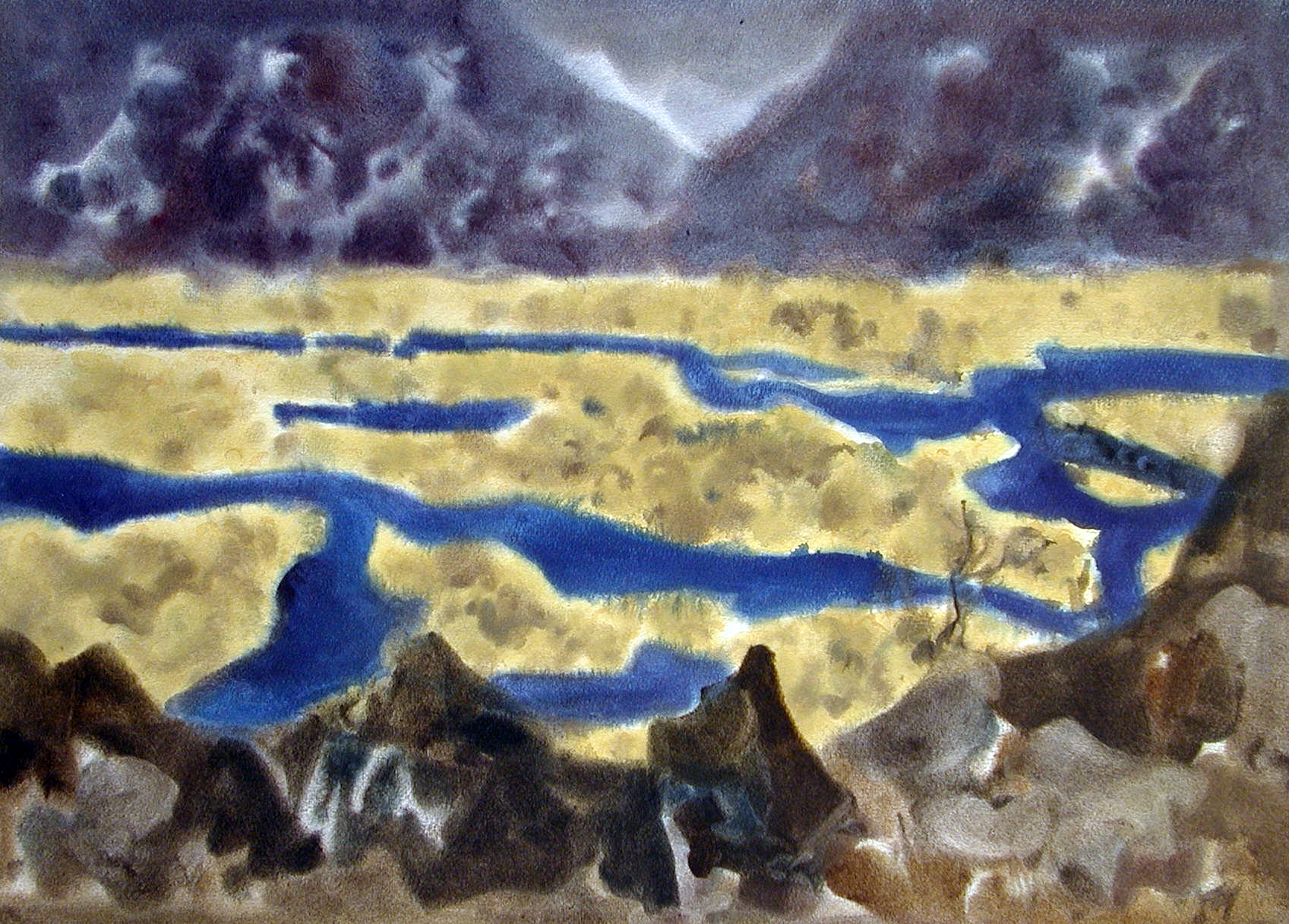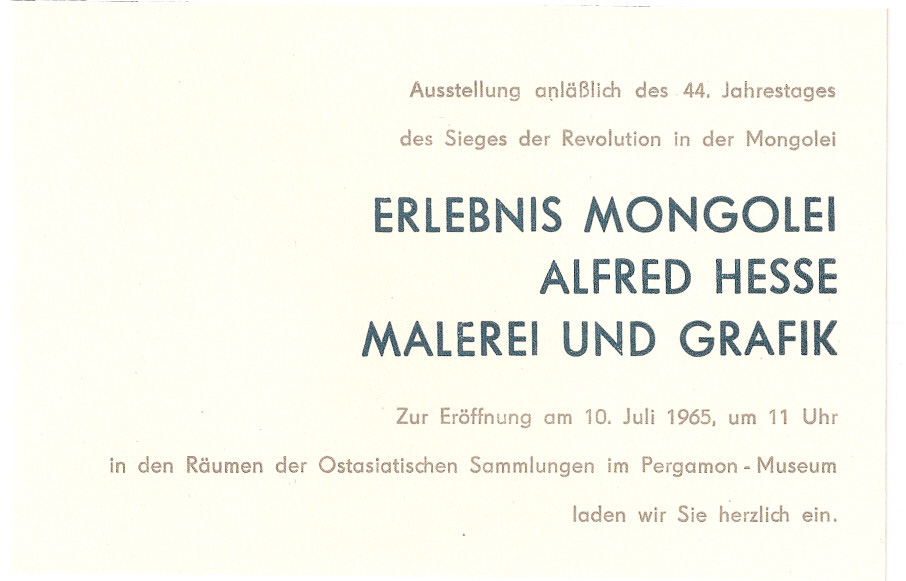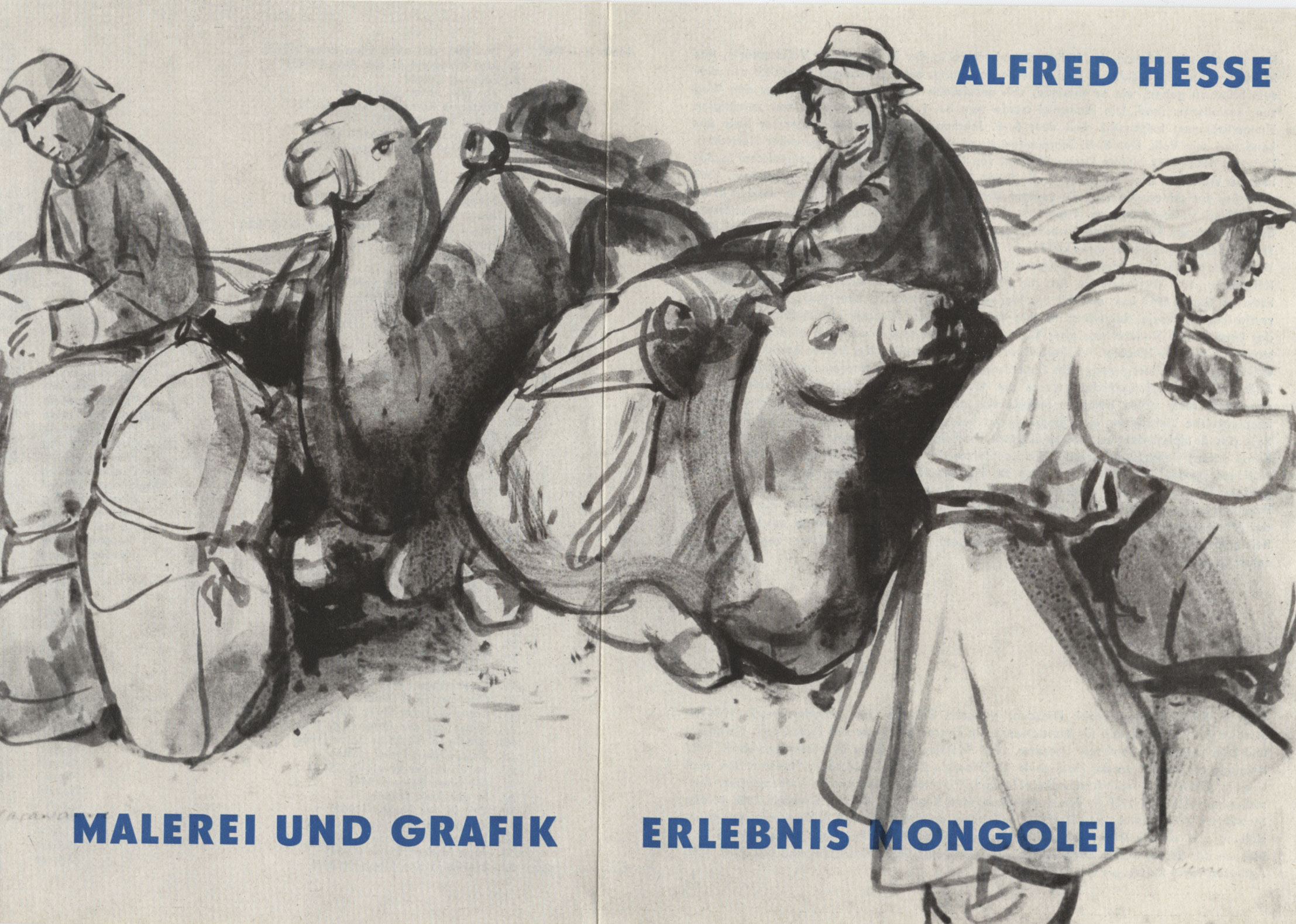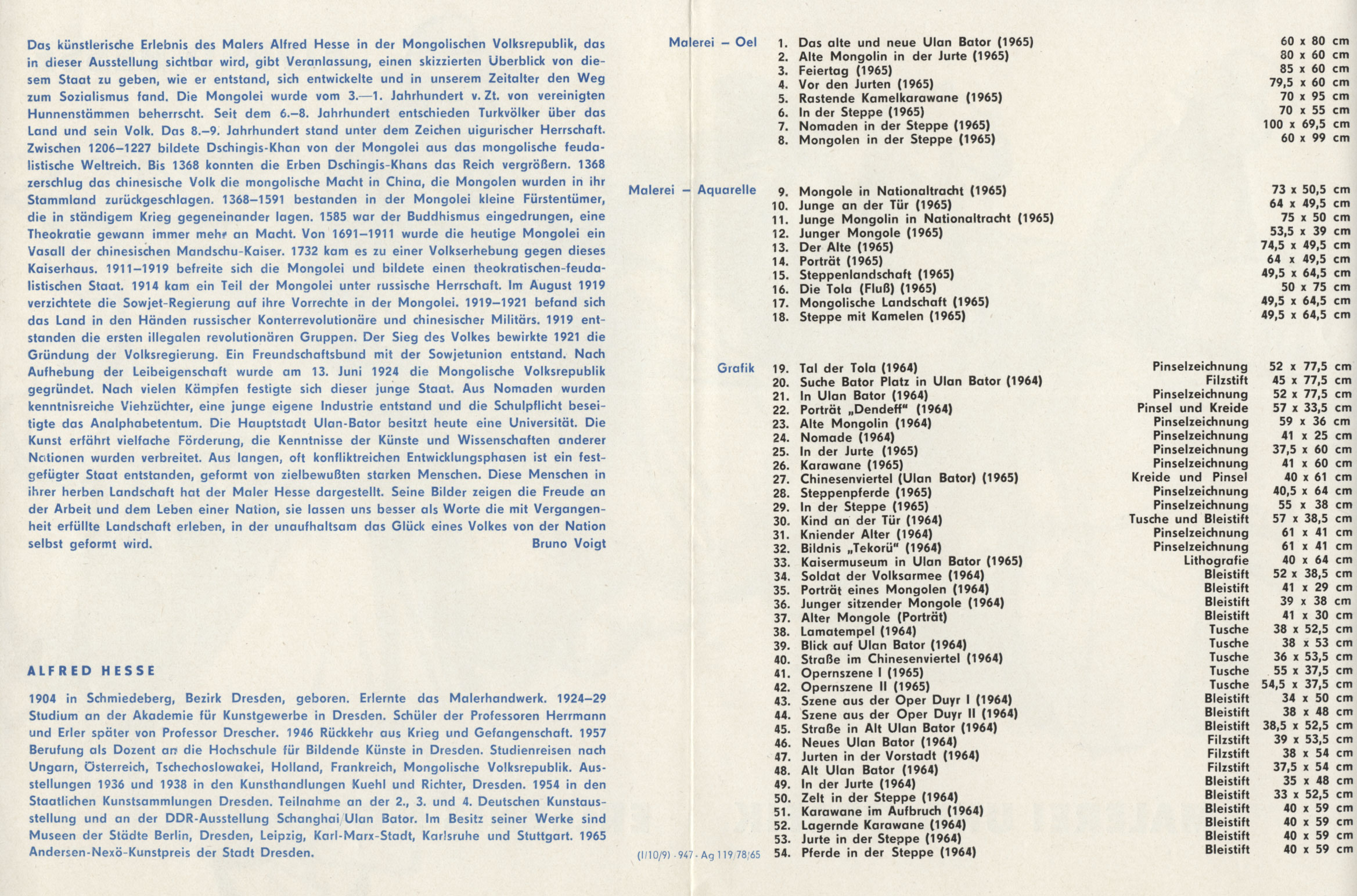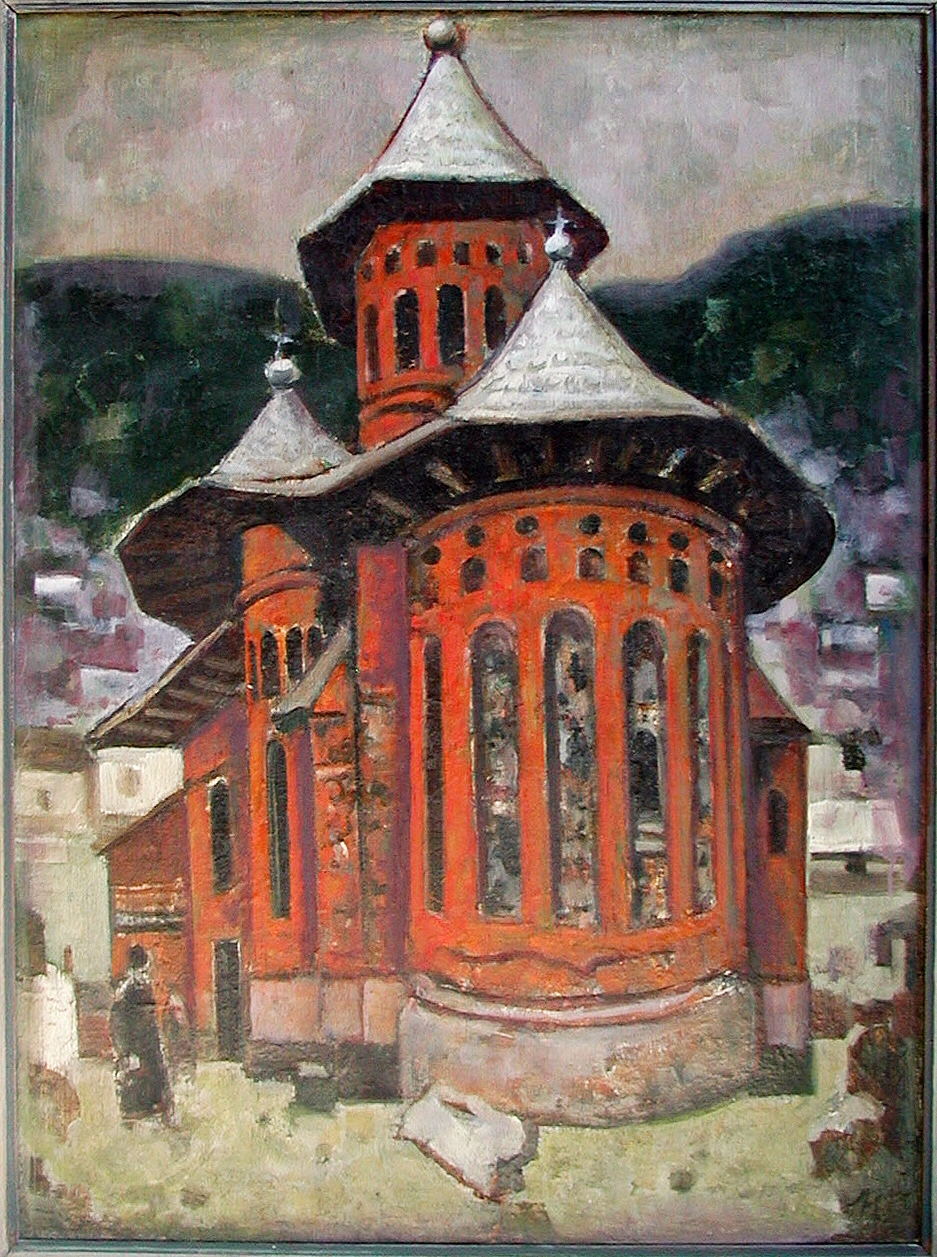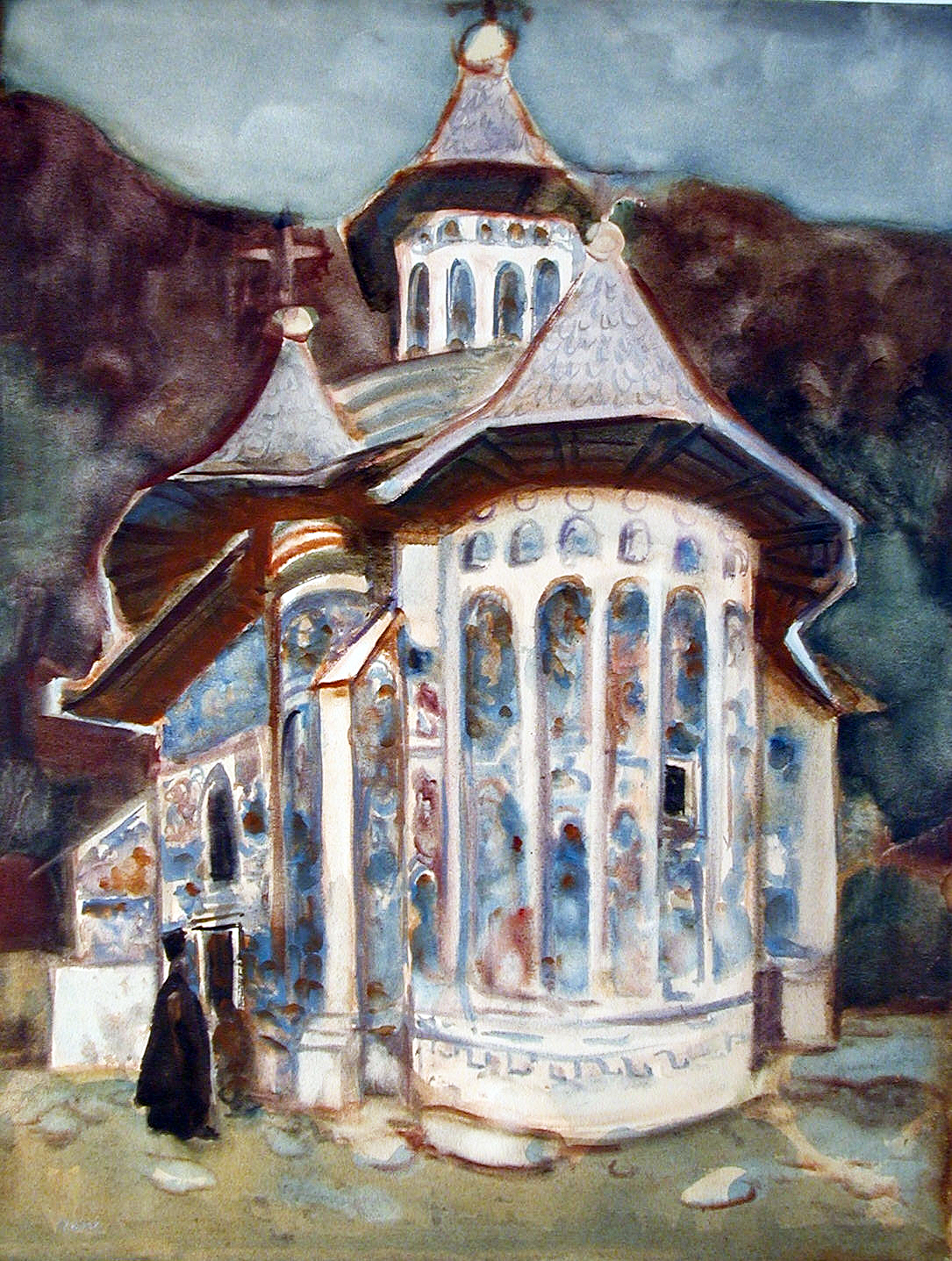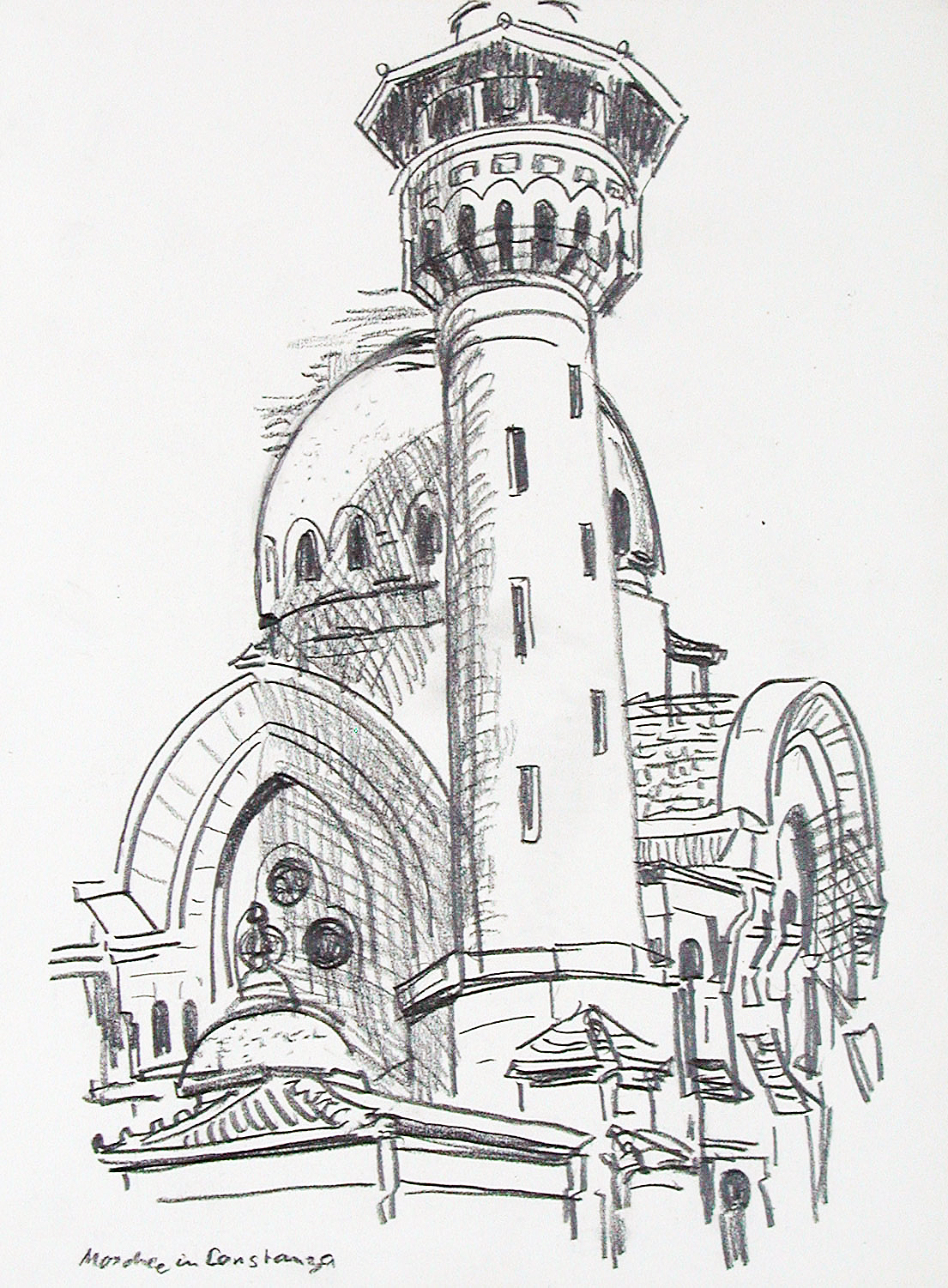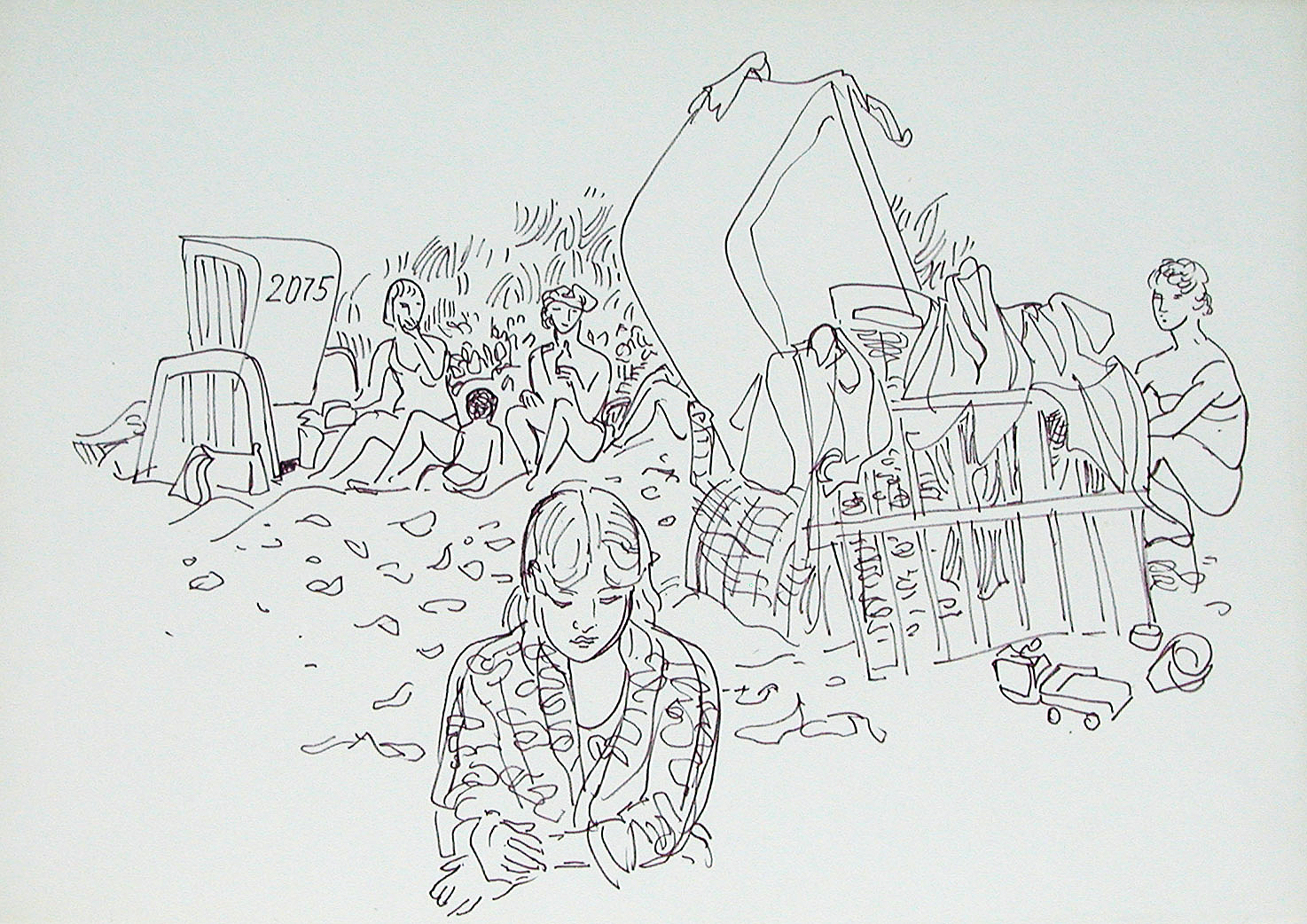The painter, graphic artist and teacher Professor Alfred Hesse – Study trips to Mongolia and Romania
- 1964
- 1967
- Alfred Hesse
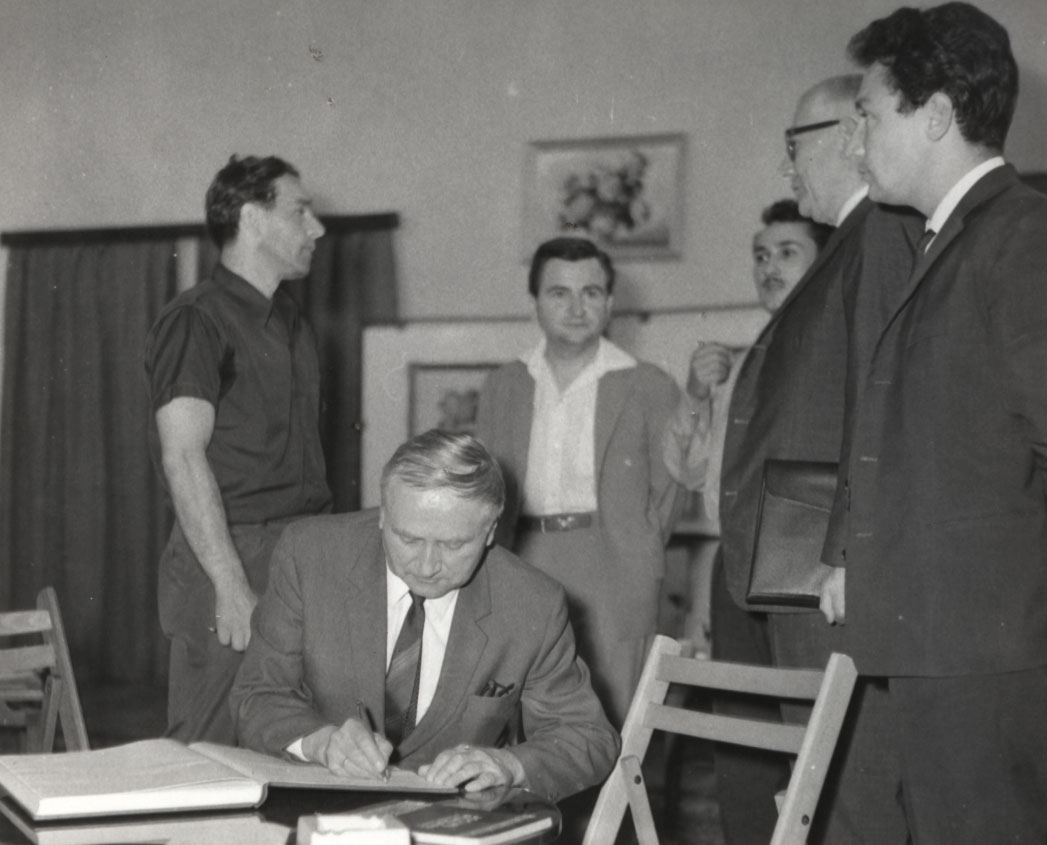
Photo: Alfred Hesse Archiv.
Alfred Hesse (1904-1988) was a painter, graphic artist and muralist from Dresden. His work was rooted in the Neue Sachlichkeit movement, and can be classified as realistic art, even if particular experiences occasionally led to expressive and surrealistic styles. Two currents shaped his artistic development. Watercolors, drawings and oil paintings emerged from a free creative joy. The other current of his work was more closely bound to set limits, tasks and purposes - mural painting.
Hesse was born in Schmiedeberg on May 18, 1904. He began his artistic career with an apprenticeship as a decorative painter and later studied at the Dresden Academy of Arts and Crafts. Shortly after graduating, Hesse received his first major artistic commission from the Hygiene Museum in Dresden for a 32-metre-long wall frieze on the subject of the "Nutritional History of Mankind", which was destroyed during the air raids on Dresden in 1945. His artistic work soon found its way into exhibitions throughout Germany in Dresden, Berlin, Munich and Kiel, but this development was interrupted by the Second World War. Hesse had to do military service in Holland and returned to a completely destroyed Dresden in 1946. At this time, Hesse's work was dominated by the confrontation with fascism and war, but also by the rebuilding of the city. He became a member of the Dresden artists' association "DAS UFER - Gruppe 1947 Dresdner Künstler".
His skills in casein painting, sgraffito technique and glass mosaic were reflected in several architectural works of art, such as the first mural to be inaugurated in Dresden after 1945. Thanks to these special qualifications, the artist was initially offered a teaching position at the Dresden Academy of Fine Arts in 1957 and was appointed Professor of Mural Painting in 1965. After 13 years of work, Hesse left the university in 1970. An intensive creative period followed, with numerous depictions of the Baltic Sea, the Elbe Valley and the Ore Mountains, as well as portraits and drawings of children, before Hesse died in Dresden in 1988.
Until today, his works have been shown in over 200 exhibitions in Germany, Mongolia, China, Hungary, Finland, England and Poland. Larger bodies of works can be found in the art funds of the Staatliche Kunstsammlungen Dresden and in the art depot of the Federal Government of Berlin, including the diplomatic missions in Paris, Rome, Lagos, Vienna, New York, Helsinki, Mexico, Porto, Shanghai, etc. In Dresden, he is represented in several museums of the Staatliche Kunstsammlungen and in the municipal gallery. The Deutsches Historisches Museum and the Neue Nationalgalerie in Berlin, the Kunstsammlungen Chemnitz, the Museum Junge Kunst in Frankfurt and many other museums have individual works in their collections.
Alfred Hesse's travel works: Mongolia 1964
Throughout his whole life, Hesse was a traveler, be it to other continents, in other countries or in his immediate surroundings between the Mittelgebirge and the Baltic Sea, always closely connected to nature and the landscape. There is evidence for several study trips he undertook to the Czech Republic, Hungary, Austria, Slovakia (1930), Holland (1935), France (1957, 1964), Mongolia (1964), Romania (1967) and the former West Germany.
His most important study trip in 1964 led to a radical change in Alfred Hesse's work: Hesse was delegated by the Ministry of Culture and the Association of Visual Artists of the GDR (Verband der Bildenden Künstler, VBK) to Mongolia for four weeks in order to conclude a friendship agreement between the VBK and the Mongolian Artists' Association in Ulan Bator. Living for weeks under the wide-open sky and with Mongolian people allowed the painter to see reality from a completely different perspective. Being six thousand kilometers away from home led him to the discover a world he had never seen before - it seemed "different" to him not only in terms of climate, landscape, nature or culture, but most importantly different through a previously unknown perception of vastness.
In addition to visiting the art school in Ulan Bator and talks about artists' trainings and methods, Hesse had ample opportunity to get to know the capital and a large part of the country. He spent a week in Charachorin, where he painted portraits of many Mongolian men, women and children. He created sketches and drawings of the vast landscapes with scattered yurts, views of the Tola River and the Erdene Dsuu monastery. Back in Ulan-Bator, he attended the "Duyr" opera, the colorful robes of which would later be reflected in his paintings. In addition to various celebrations to mark the collaboration between the artists' associations, there was also an exhibition of his works at an art school.
Hesse produced around 100 ink and pencil drawings during this trip, but for many years to come, he further transformed his impressions into colorful and expressive watercolors and paintings. The memories of this journey greatly stimulated his artistic work and, by his own account, brought about a change in his artistic vision and design. The journeys through impassable steppes, the difficult crossings of rivers, encounters with huge herds of horses and camel caravans provided the artist with a wealth of new pictorial motifs. The exhibition "Experience Mongolia", which featured many watercolors and paintings, was shown in 1965 in the East Asian collections of the Pergamon Museum in Berlin. This was followed by many other exhibitions in which the results of his trip to Mongolia were on display.
Romania 1967
Another special study trip was Alfred Hesse's visit to Romania in 1967. He got to know the cities of Bucharest, Constanta, Mamaia, Mangalia, Jassy, Suceava, Humor, Voronet and Dragomirna. On this trip, which he undertook on behalf of the art academy, he studied modern Romanian architecture and architectural art, visited museums / cultural centers and exchanged ideas with a large number of fellow artists and architects. He apparently made many sketches and drawings already during the trip. It appears that Hesse was particularly impressed by the Voronet Monastery, which he later captured in several watercolors and an oil painting.
These and many other works of art can nowadays be found in the Alfred Hesse Archive, which was founded by Dr. Antje Kakuschke. The archive is dedicated to the research and appreciation of the life and works of Alfred Hesse, the research and scientific art-historical evaluation of his biography and artistic legacy. A further concern is public relations work on the life and work of the artist, as well as the realization of exhibitions and publications.
This article was written by Dr. Antje Kakuschke, Hamburg, 16.03.2024.

